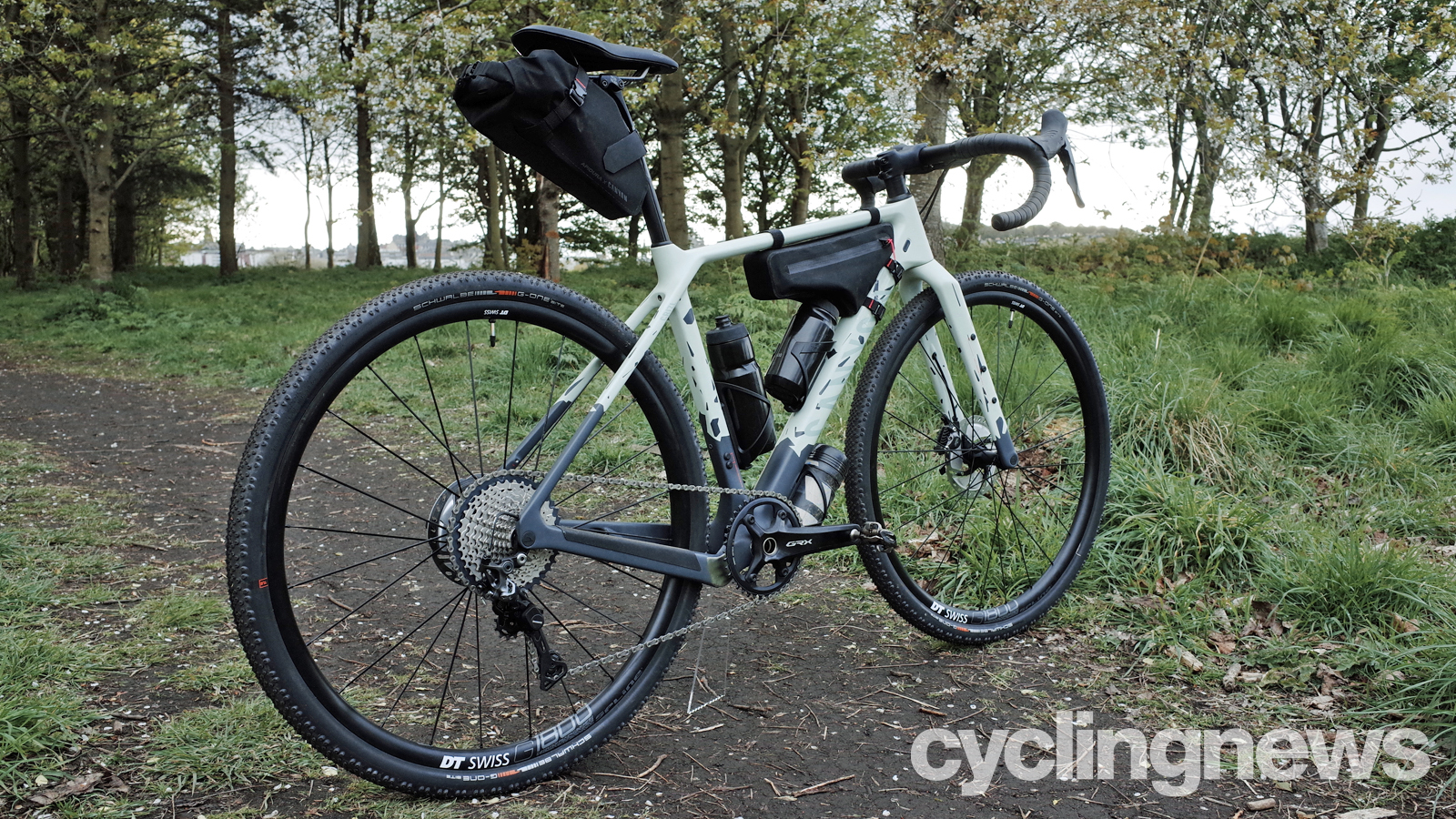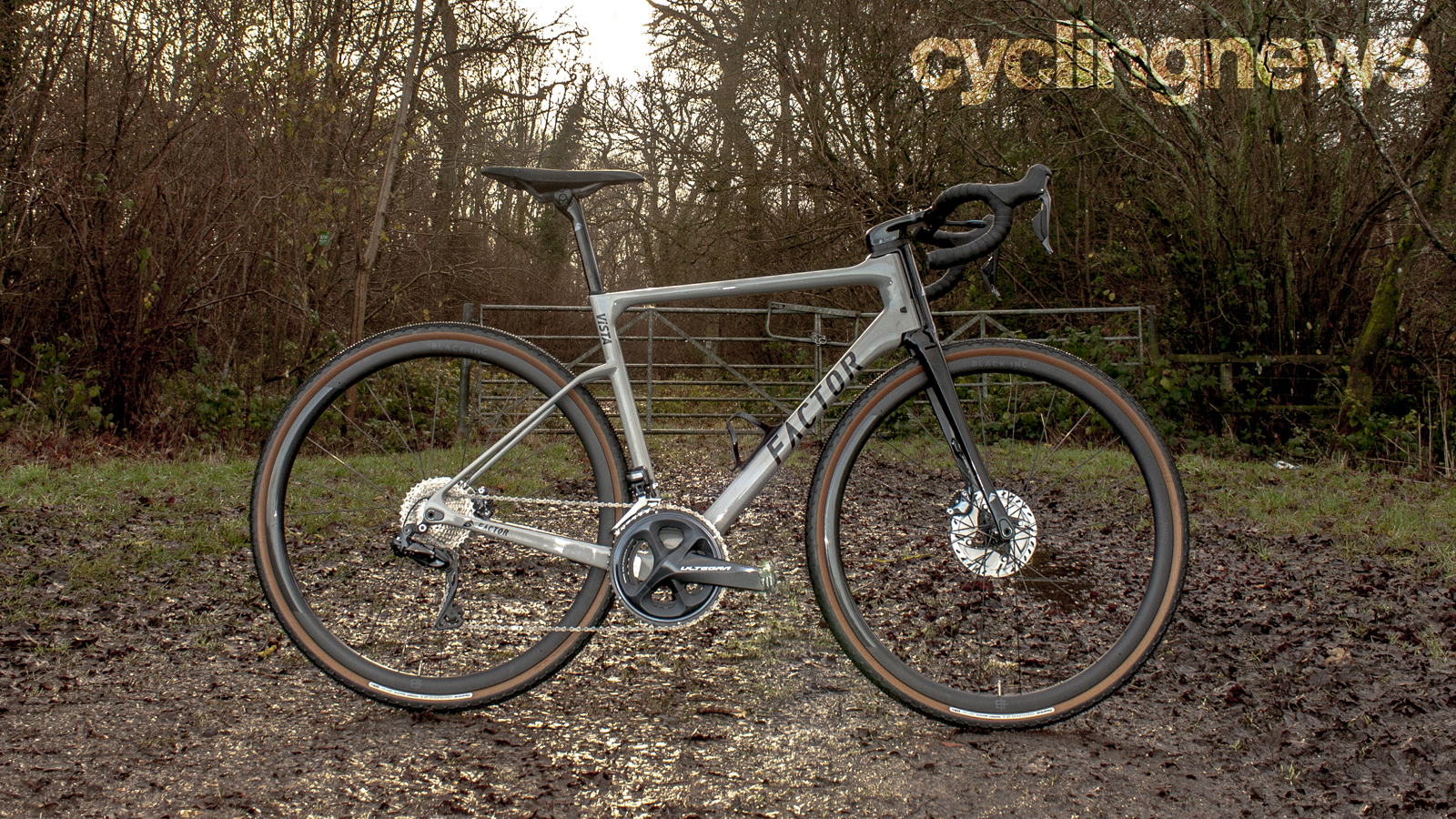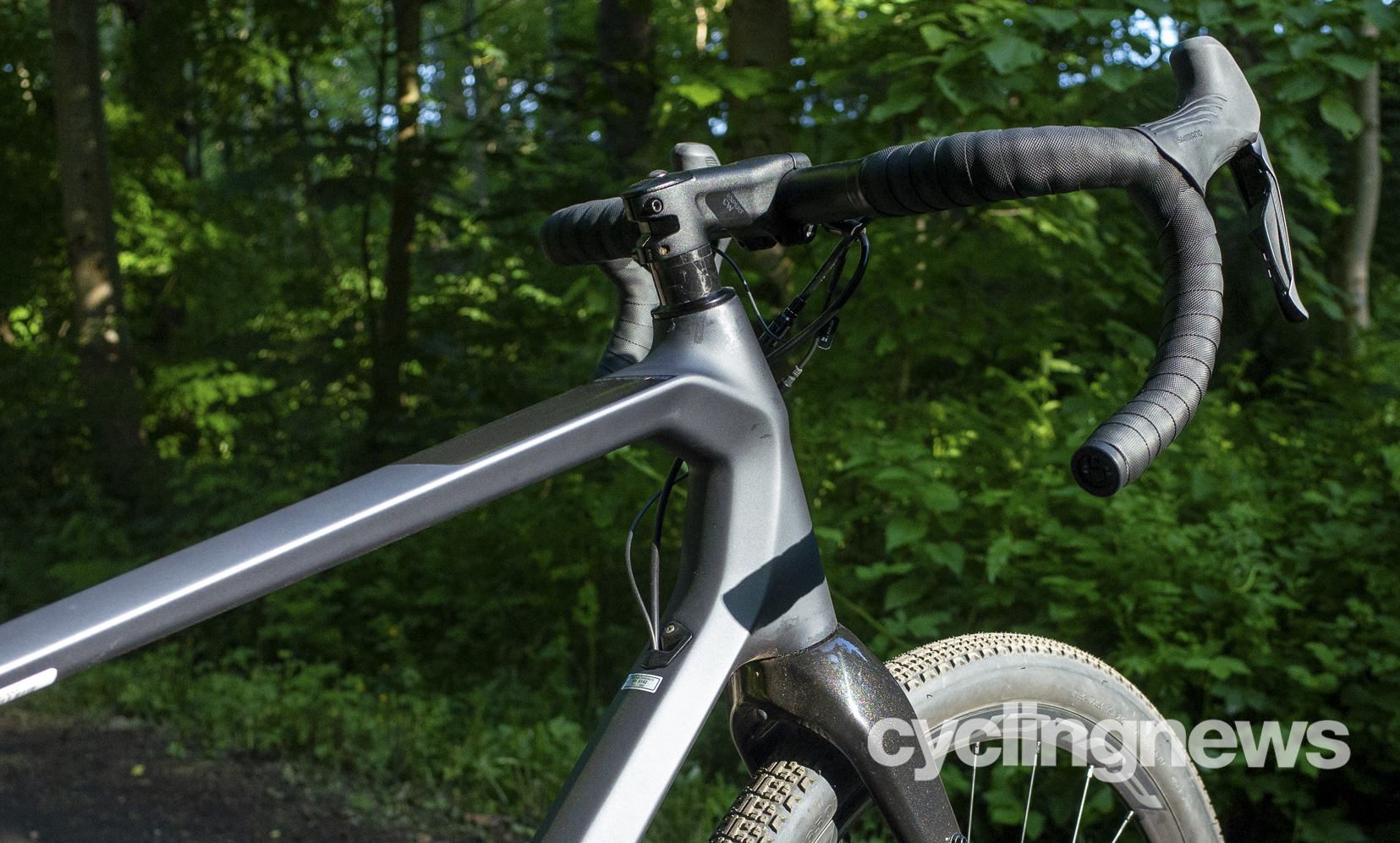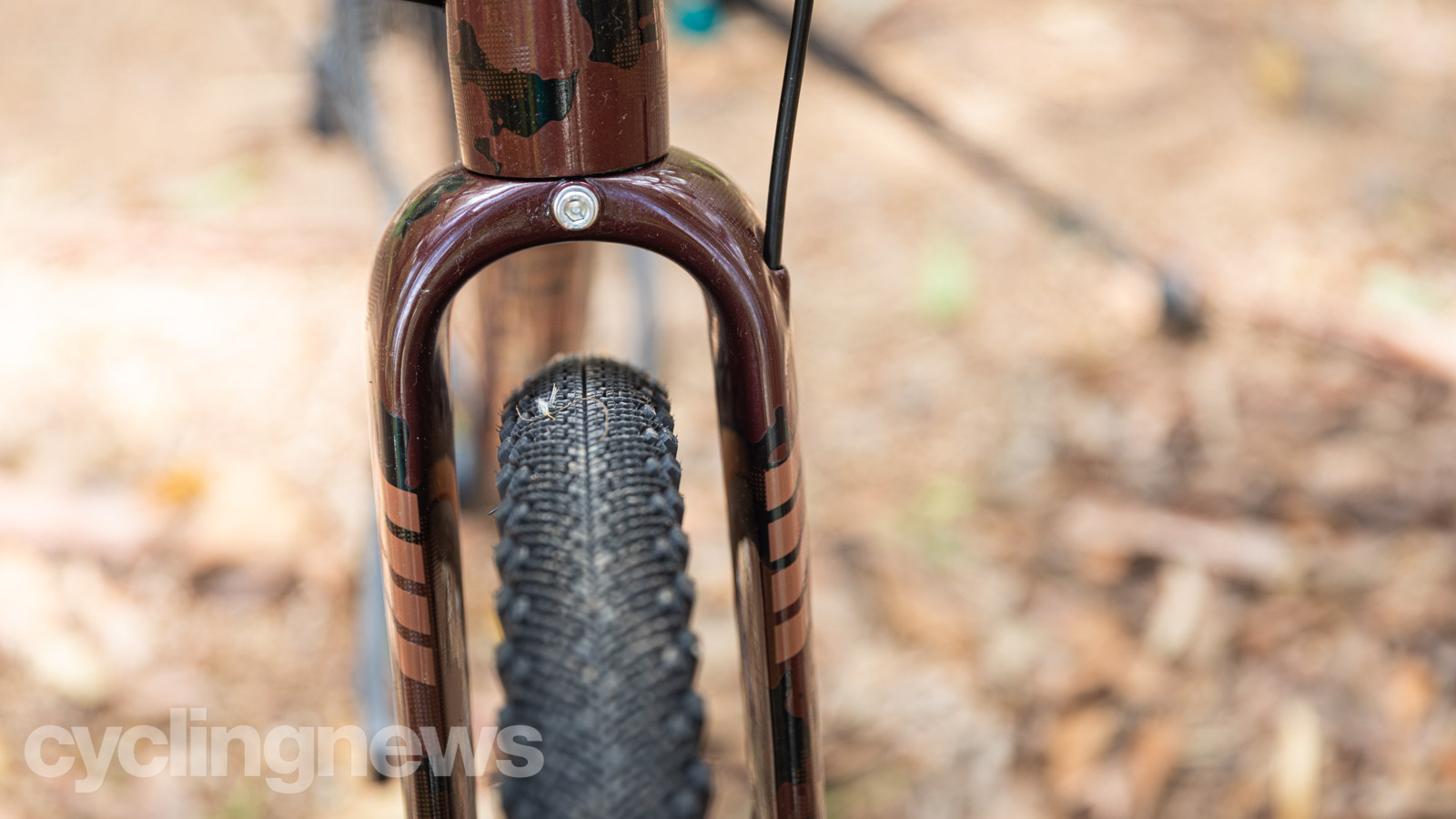Gravel bike sizing & geometry: Everything you need to know
A deep dive into the unique sizing, geometry and design of gravel bikes

A gravel bike can be seen as a crossover between road, cyclo-cross, and mountain bikes, including features from all three styles as well as its own unique brand. The best gravel bikes are meant for exploring, adventure, all-day and all-terrain riding, while also being lightweight, performance-driven, and capable in all sorts of weather conditions. A relaxed fit and wider tyres make them more comfortable than a road bike, while the drop bars and lightweight frames aid in efficiency over mountain bikes.
Gravel bikes are designed for any and all cyclists, from everyday commuters and off-road explorers to dedicated racers and bikepacking adventurers. Yesterday we answered the question, 'what is a gravel bike?' and in this article, we dive into the unique geometry and sizing of gravel bikes.
Similar to a road bike fit

Sizing and fit on a gravel bike are quite similar to those found on the best road bikes, although it can be more common for gravel bike manufacturers to use small/medium/large sizing rather than measuring in centimetres. Due to the frame features outlined below, the overall fit of a gravel bike is closest to a road bike, rather than a mountain bike or cyclocross bike.
If you’re in between sizes, don’t worry, both options have their benefits. Go with the slightly smaller size if you value agility and performance. On the other hand, the slightly larger frame will be more comfortable and better suited to long endurance rides or bikepacking trips.
If sizing stumps you, then we've got a comprehensive bike size guide that can help you out, but before you make your final decision, let’s dive into the specific geometry of a gravel bike.
Longer wheelbase and slacker head tube angle

At first glance, you may notice that a gravel bike looks longer than most road bikes. Indeed, gravel bikes have a longer wheelbase, which helps stretch out their frame and improve handling on rough terrain. Downhill mountain bikes share the same attribute, although their wheelbases are even more stretched out – and of course, the terrain they’re designed for is much more extreme.
A longer wheelbase makes gravel bikes more stable on off-road terrain, as well as their slacker head tube angles (the angle between the horizontal plane and a line running down the centre of the steerer tube). A slacker head tube angle lengthens the wheelbase and pushes the front wheel out further from the bottom bracket. This helps the bike handle better at slower speeds and on technical terrain, and also reduces the chances of toe overlap. You will sacrifice a bit of straight-line speed and aerodynamics, but the off-road superiority is well worth the cost.
Cyclo-cross bikes and some road bikes will have steeper head tube angles (shortening the wheelbase), which makes them better at tight cornering and handling. This style is perfect for criteriums and technical CX courses, but they will feel twitchier on other off-road terrain, especially steep descents.
Frame tubing

Many gravel bikes are built with frame tubes designed to absorb vibrations and improve comfort over rough terrain. Brands will often put curved and flattened sections of tubing in the rear triangle of their gravel frame to increase flexibility and improve comfort, while some manufacturers even include vibration absorption elastomers or suspension in the seatpost.
Gravel frames are almost always heavier than road frames, but it’s not all bad. The heavier frames are designed to be much more durable and better at handling tough terrain, and many include mounts or bolts for extra accessories, like the best bottle cages, the best mudguards, the best bike lights, and luggage.
Short reach
Most gravel bikes have a shorter reach, which helps keep the rider’s centre of gravity upright and over the bottom bracket, as opposed to road bikes which often have longer reaches and stretched-out, low-slung riding positions.
Long reaches are great for time trialling and aerodynamics, but they are horrible for off-road riding and bike handling. Thus, gravel bikes tend towards handling over speed, and improve overall comfort with a shorter reach. This is often exaggerated with shorter stems, and wider handlebars help to further increase leverage and control.
Drop bars

Despite being designed for rough terrain and off-road riding, gravel bikes have drop handlebars. Unlike their mountain bike cousins which use flat handlebars, gravel bikes are not quite designed for ultra-steep and super technical trails. Flat bars keep your hands wide to help with tight cornering and handling, but gravel terrain is not usually that challenging. Gravel bikes are not only meant for off-road riding but also for comfort and speed - especially on long, all-day rides or bikepacking trips. Drop bars will be much faster and more comfortable than flat bars, while also being capable on gravel roads, dirt trails, and variable Tarmac.
That said, many of today's best gravel handlebars are drop bars with a wide flare. That means the drops are bent outwards, to give your hands a wider base of support when steering in the drops. The hoods themselves are in the usual position, though gravel-specific bars are usually wider than classic road handlebars – some styles are available up to 52cm wide.
Upright position
A gravel bike will ride much more upright than a road bike because of the differing frame geometry and slacker angles. The upright position will help increase comfort and off-road handling, which is why gravel bikes are perfect for all-day riding and bikepacking. Of course, you won’t be quite as fast in a straight line, but you’ll be surprised at how quick most gravel bikes actually are. The unique and upright gravel bike position is well worth sacrificing a few aerodynamic watts.
Combined with a shorter reach, slacker angles, and longer head tube, gravel bikes handle well over rough terrain and make it easy for the rider to shift their weight around when it comes to riding over rocks or technical descents. While CX bikes appear built for off-road terrain, they are much more limited than gravel bikes because of their shorter wheelbases and shallower angles. CX bikes do handle well in tight corners, but struggle on steep descents, bumpy roads, and technical terrain compared to gravel bikes.
Room for wide tyres

Gravel bikes are designed to fit a huge variety of tyre widths, from 28mm to 47mm, while some frames can go even bigger. The frames and forks of gravel bikes are designed for wider tyres, while also making room for mud and grime that the tyres may collect on off-road rides.
Depending on your particular approach to gravel cycling - whether it's racing or bikepacking - the best gravel tyres offer the right amount of traction and rolling resistance, and shouldn't be overlooked.
Different features and styles of gravel bikes
The 'traditional' gravel bike has disc brakes, drop bars, comfortable frame geometry, and 40mm wide tyres. But as you could probably guess, there are countless variations, from the racing machines and mountain bike look-a-like, to the bikepacking rig.
There are also the best budget gravel bikes which offer a solid off-road platform swapping the fancy features for a lower price tag, while the best entry-level gravel bikes are built for beginner-level riders. These bikes have a comfortable fit, basic gravel bike geometry, and capable disc brakes.
Lastly, there are accessory-laden gravel bikes built for bikepacking and adventure rides. These frames have super wide tyre clearance, bolts and mounts everywhere, an upright and comfortable fit, and a huge gearing range. These bikes are neither the lightest nor the fastest, but they are the most comfortable and durable. You can mount lights, mudguards, bags, and bottle cages all around the frame, and trust in your wide tyres over the most technical terrain.
The latest race content, interviews, features, reviews and expert buying guides, direct to your inbox!
Zach is a freelance writer, the head of ZNehr Coaching, and an elite-level rider in road, track, and e-racing. He writes about everything cycling-related, from buyer's guides to product reviews and feature articles to power analyses. After earning a Bachelor’s Degree in Exercise Science at Marian University-Indianapolis, Zach discovered a passion for writing that soon turned into a full-fledged career. In between articles, Zach spends his time working with endurance athletes of all abilities and ages at ZNehr Coaching. After entering the sport at age 17, Zach went on to have a wonderful road racing career that included winning the 2017 Collegiate National Time Trial Championships and a 9th place finish at the 2019 US Pro National Time Trial Championships. Nowadays, Zach spends most of his ride time indoors with NeXT eSport.